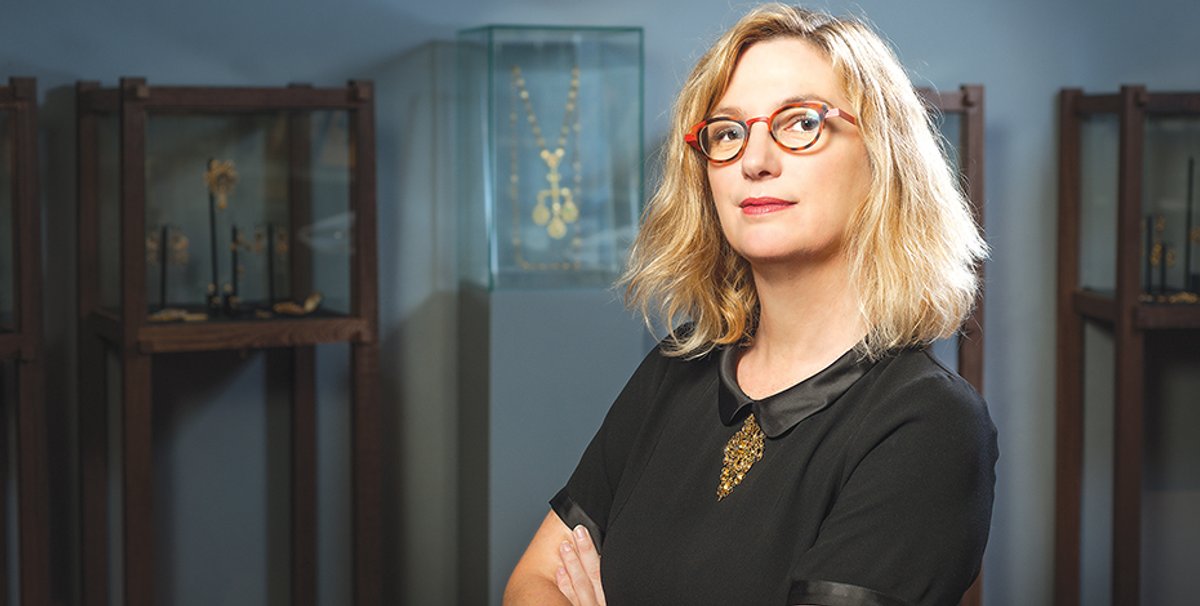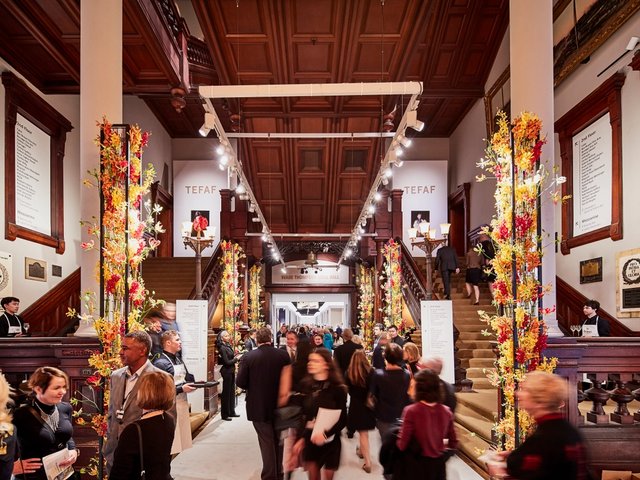Sigmund Freud, perhaps predictably, opined that the urge to collect stems back to an unresolved emotional conflict triggered by potty training. Collectors, he declared, are forever making up for a loss of control of their bowels as children by seeking to control and regain their “possessions” (once lost down the toilet) in adulthood.
However, no potties were cited by the dealers interviewed here who also moonlight as collectors. These dealers do not collect for monetary gain—Johnny Van Haeften, a former Tefaf exhibitor, once held a “mercifully short exhibition” of his collection of “dreadful” paintings by his ancestor, the “deservedly forgotten” 17th-century Dutch artist Nicolaes van Haeften—a “complete loss leader”. That said, James Butterwick did (unintentionally) sell a set of Winston Churchill books to a Kazak for £75,000 after telling him they were worth only £5,000. Here, five dealers talk about what—if not childhood trauma—drives them to collect.

Adrian Sassoon
Adrian Sassoon
Belying its location in an otherwise immaculate home in Knightsbridge, London, Adrian Sassoon’s study, in his words, “looks like a poltergeist has struck”, with his floor-based filing system complemented by a collection of 18th-century Vincennes porcelain. To relieve the groaning shelves, the contemporary ceramics dealer has just sent 20 of his best Vincennes pieces out on a five-year loan to the Getty Museum, where Sassoon got his first job in 1980 at the age of 19. There are, though, still around 170 other Vincennes pieces dotted around his home, along with a plethora of other mini-collections, from Norman Parkinson photographs to fragments of antique textiles. “I try not to live like Marie Antoinette, but I do like French 18th-century things,” he says.
The experimental wares of the Vincennes factory, founded in 1740, are the precursor to Sèvres, where the factory moved in 1756. Sassoon’s remit is strict: “I’m turning my eye to things made in the later 1750s—I’m not just obsessed by the 1740s! French taste in the 18th century moved on very quickly, and porcelain was at the cutting edge of technology then—you should be able to date things by eye to within a five-year period.”
This is Sassoon’s second Vincennes collection. Much to his regret now, he sold the first in 1992 when he went it alone as a dealer: “I thought, start by making your mark, and sold the lot to the Sèvres Museum.” Well, almost the lot: he still has a broth bowl from the Rothschild and Rosebery collections at Mentmore, Buckinghamshire, that he bought 30 years ago.
Sassoon’s knowledge of factory marks, decoration and nuances of shape is deep, inflected with boyish enthusiasm, but he maintains his approach is intuitive rather than academic, and he is no purist. “I can be tempted by something I shouldn’t have—dilute the best object with half of a quirky, shattered piece of the same period,” he says.
Keen to draw a line between business and pleasure, he just doesn’t sell the “early stuff”. Yet he does buy some contemporary pieces, although not before they have been exhibited at a fair. “It’s a bit obnoxious to do that,” he says. “But sometimes I’ll go to Tefaf and spend 11 days around an object [on the stand], and if no one buys it, then I might buy it for myself.” However, he adds: “After 25 years, it might have been more remunerative to keep more—we’ll say wow, that lady has such an amazing piece by so-and-so, and look on the computer and realise it was so cheap 20 years ago.”
He currently has three museum loans out: the Vincennes group to the Getty; a Pierre Bonnard that he inherited from his grandmother, currently in Tate Modern’s exhibition; and three pots by the contemporary ceramicist Magdalene Odundo, which are on loan to the Hepworth Wakefield.
Some dealers do not collect—is that a bit odd? “If you’re a dealer in Impressionist or Old Master paintings, you can’t really afford to have a collection of your own, because you can hardly afford to be a dealer,” Sassoon says. “If you can afford to be a dealer, why would you be? And if you can’t afford to be a dealer, how can you be?” he ponders.
While Vincennes porcelain is his main love, Sassoon “can be tempted by an 18th-century pastel”, and one of his prized pieces is a pastel portrait by Jean-Étienne Liotard, bought a couple of years ago at Tefaf Maastricht. Does he often buy at Maastricht? “Gosh, yes. Not if we’re not selling, but if we’re selling well…”
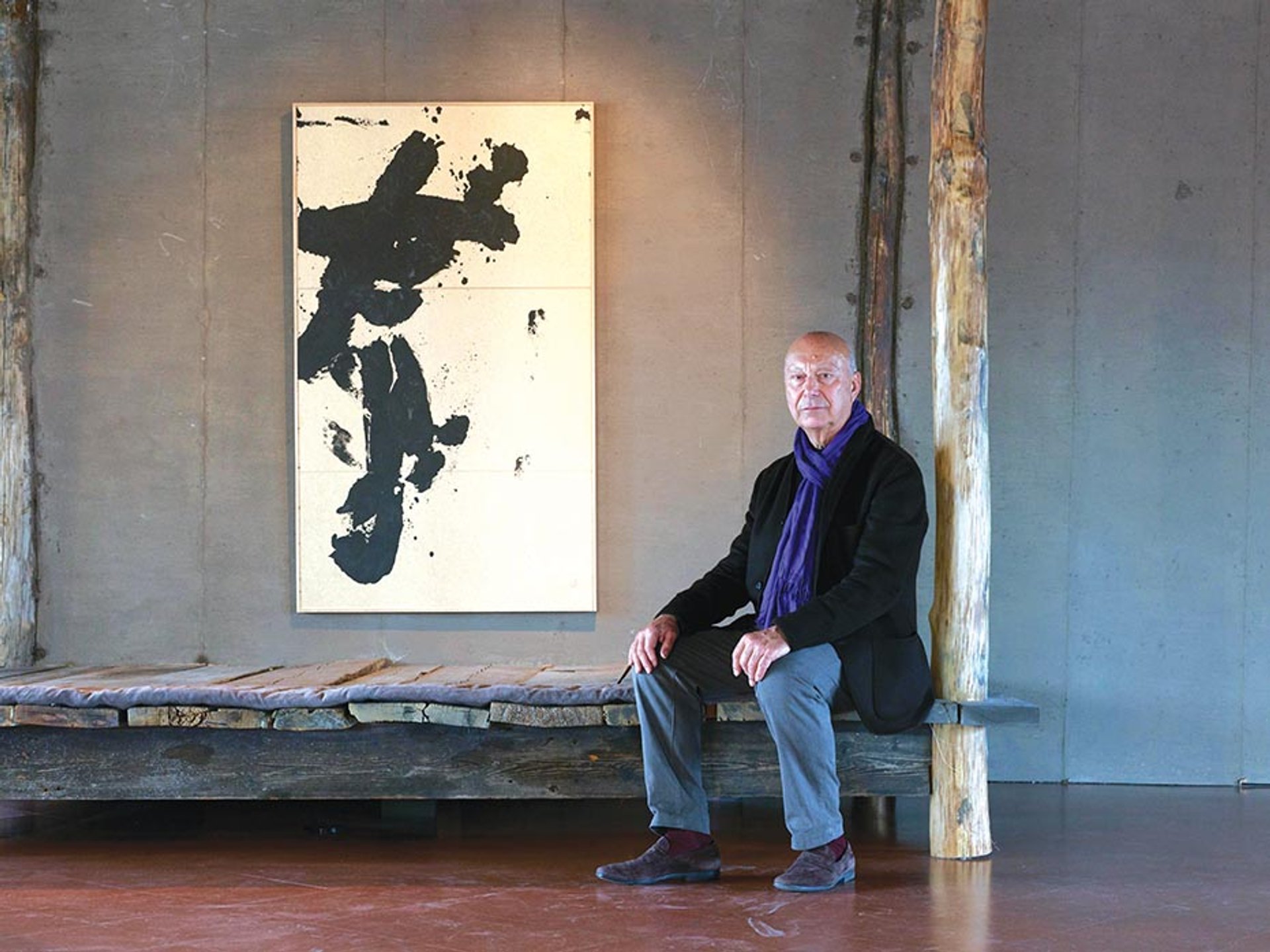
Axel Vervoordt
Axel Vervoordt
Axel Vervoordt went on his first buying trip to the UK at the age of 14, visiting relations and colleagues of his father’s (a horse dealer) and asking if they had any art or antiques to sell. In the early 1960s, Vervoordt would come to the UK on buying trips every school holiday, selling his finds to his parents’ friends on his return to Holland. Later, when he joined the army’s pharmacy unit, he “quickly set up an aperitif bar” where he would ask colleagues if they or their families had anything they wanted to flog. “One brought in a bucket of silver, another sold me a painting by Magritte, so I decided my vocation was buying and selling,” he says.
“I think the idea of the dealer-collector has always been. I never buy anything I wouldn’t love to own. The things you really love are the things you talk too much about to clients and you always sell them first. I’ve always lived surrounded by art and antiques; the unsold pieces are my collection.”
At first when he was establishing his business, Vervoordt “could not afford to keep the best pieces, because if I did I would not have the best clients”. But, when he reached his early 50s, he decided he “could keep a few of the really good things. I have a rule that if I really love something, I have to try to sell it for a year. If it doesn’t sell, I keep it forever, and if a client changes their mind, I tell them sorry, too late—you had your chance.”
In 2008, he and his wife set up the non-profit Axel & May Vervoordt Foundation, lending works to institutions but also exhibiting them at his Kanaal site, a vast “cultural and residential complex” in Antwerp, housed in a converted distillery that he opened last year.
Vervoordt’s home (and his by-appointment showroom) is a 12th-century castle near Antwerp, where the mix of works—everything from antiquities and Asian art to paintings by Lucio Fontana and Japanese Gutai group artists-—is much like that on the atmospheric stands for which he has become known at fairs. He juxtaposed ancient and Modern long before “cross collecting” became a market buzzword.
His approach is entirely aesthetic. “The opposite of stamp collecting,” he says. “It’s all about intuition, feeling, creating an atmosphere.” The best objects, he thinks, speak as much to the gut as they do to the brain. It is an approach he has also applied to his business, now in its 50th year. “When I look backwards, I see there is a line, but I never feel I have a line at the time. All my major decisions are guided by gut instinct.”
Downsizing from his 50-room castle is not on the cards, though. “Sometimes I say, when I’m very old, I’ll go and live in a small house with just a few things. I start making a list of a few things I would take, but I can’t do it.”
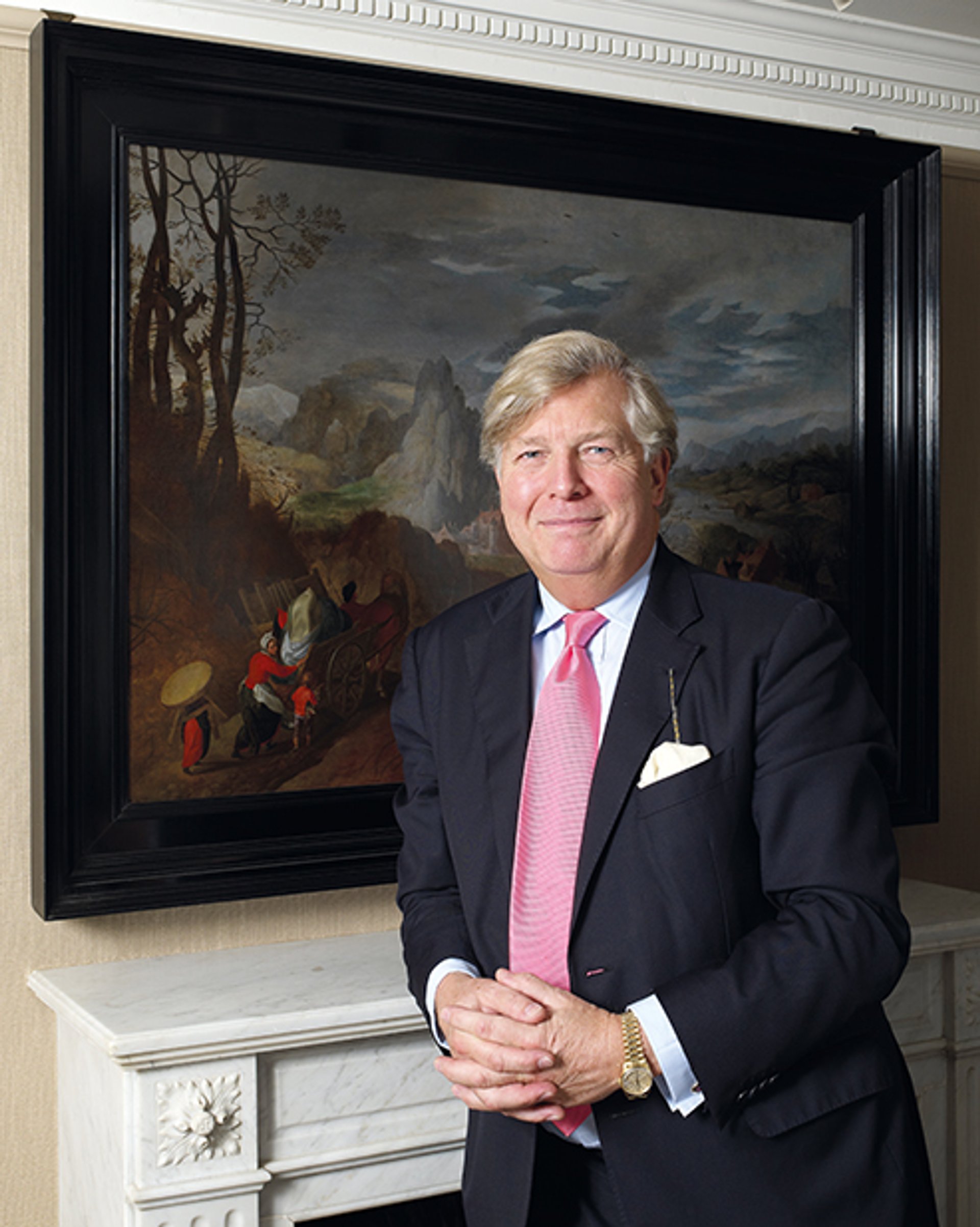
Johnny Van Haeften
Johnny Van Haeften
Johnny Van Haeften is the proud owner of what used to be the world’s most expensive biscuit—in 2000 the Dutch and Flemish Old Master dealer spent £4,935 on a surviving biscuit from Ernest Shackleton’s Nimrod expedition to Antarctica, then a world record for a biscuit (although some biscuit crumbs from the explorer’s subsequent Endurance expedition sold for far more in 2001) before one from a Titanic lifeboat sold for £15,000 in 2015. “The biggest problem is how to keep it away from the labrador,” he says. Van Haeften’s great uncle, Philip Brocklehurst, was on the Nimrod expedition, hence the interest: Van Haeften inherited Brocklehurst’s sledge and pennant when he died in 1975 and has been collecting since.
There is one thing Van Haeften will never find, however: “He [Brocklehurst] gave his big toe, in a jar of formaldehyde, to his girlfriend when he got back. He’d had to cut it off on the slopes of Mount Erebus due to frostbite. She kept it on her mantelpiece for years until she died, but her family didn’t know whose it was, so they threw it away, not knowing it’s the only human remain from the expedition.”
A self-confessed geek, he and Tom Kaplan (the owner of the Leiden collection of Rembrandt paintings) refer to each other as G1 and G2. “Tom really only collects Rembrandts, but I’m G1 as I’m the bigger geek,” Van Haeften says.
He really is: his main collecting passion are the stamps and postal history of Malta. “When I was eight, my grandmother gave me some Maltese stamps and I started to collect. Now it has expanded to about 65 volumes and one of the only two known letters written by Napoleon on the island,” he says.
Most people, Van Haeften thinks, have a collecting instinct in them: “There is a society of people who collect barbed wire from battlefields, and a railway line collecting society. My wife should consider herself lucky.”
As well as works by Nicolaes van Haeften, he collects Dinky and Corgi die-cast toys, ancient bronzes, smoking implements, English watercolours, shells and Dutch miniature silver. He sees connections in the apparently disparate objects. “Dutch paintings are a bit like overgrown stamps,” he says. “I think I just find so many things interesting.”
His prize possession is a painting by the Dutch 17th-century artist Caspar Netscher, of a girl at her toilette. It has just been returned to him from its loan to the Vermeer and the Masters of Genre Painting CK touring show. “I missed it,” he says. “I went to go and see the show, and she winked at me I’m sure.”
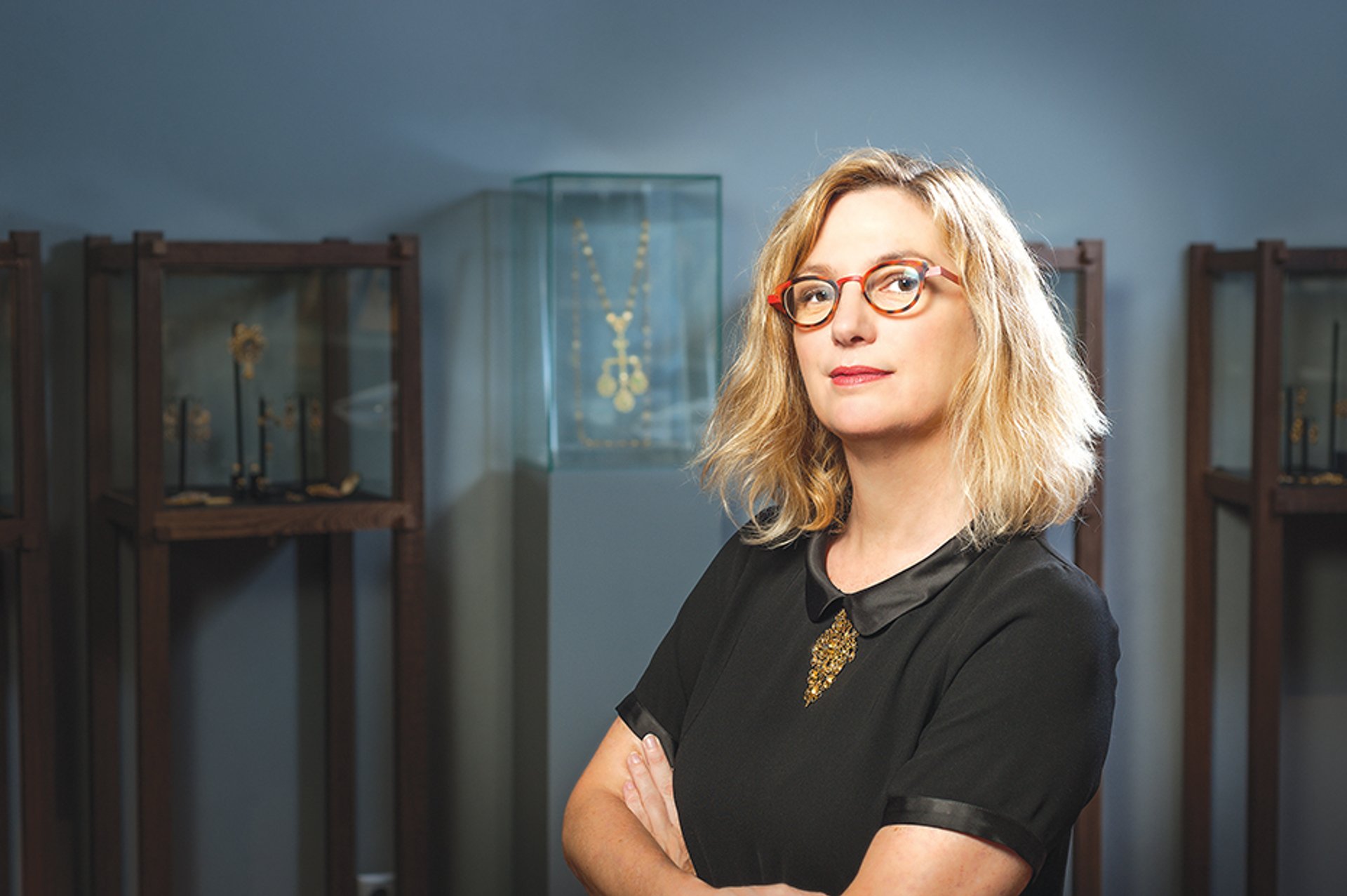
Deborah Elvira
Deborah Elvira
“Some things, you take them in your hand and you can’t let them go,” says Deborah Elvira. “They are not better or worse than others, but sometimes you have a crush on something and you have to keep it.” The dealer in 16th- and 17th-century jewellery in Oropesa del Mar, Spain, started collecting around 10 years ago. “At first, I wasn’t very efficient because you always tend to be mean to yourself, and I put my money into the big pieces for the business. But then I decided, now I’m ok and I can keep something for myself.”
Her first important buy was a Jean Després ring and, in her collecting she has focused on “another date, another style [to dealing], so there is no conflict. If I buy 19th-century jewellery I feel free, because I would not put that on my stand. Same with my contemporary jewellery, because I like to buy from and have a relationship with the artist.” Yet the three pieces she would never sell are all 17th-century Iberian: a gold pendant (originally meant for a bodice) with diamonds, a rock crystal cabochon (one of the first pieces she bought), and an emerald and a diamond cross. Her Holy Grail pieces are a ring by JAR and a piece by Otto Jakob, “but apart from that my mind is open to surprises.”
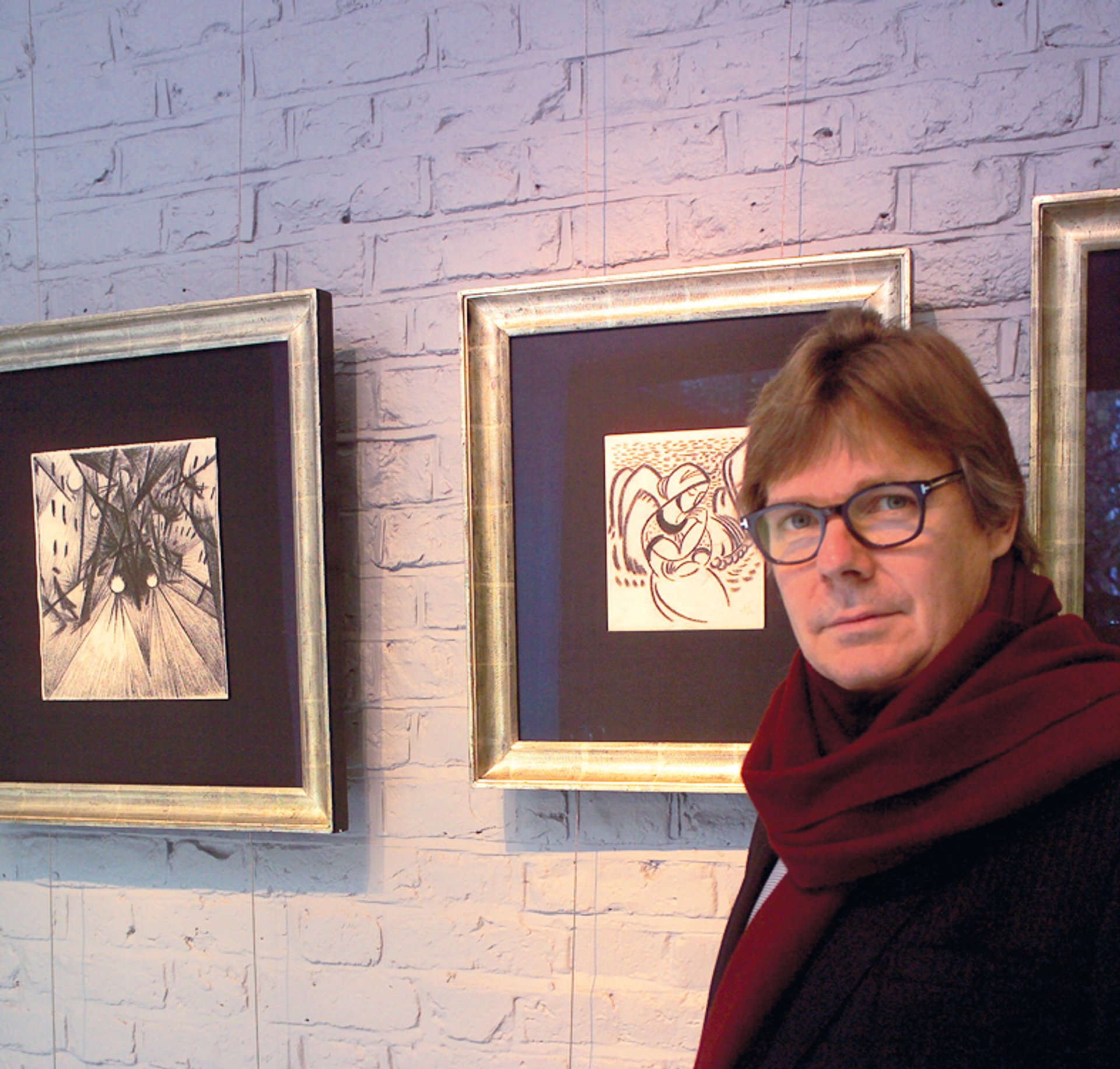
James Butterwick
James Butterwick
When James Butterwick’s wife gave him a painting of his favourite building, Durham Cathedral, by the English watercolourist George Fennell Robson (1788-1833) for his 50th birthday, the Russian art specialist (ever the dealer) googled how much she’d paid for it. “I thought, for god’s sake, you can’t even buy a Russian sketch for that sort of money—I’m in the wrong business,” he says. It sparked his collection of English watercolours, which has spiralled out into Old Master drawings. “It’s great fun to collect, because it’s not art that shouts at you—it’s very subtle. I’ve bought watercolours for nothing, like a couple playing dominoes for €100 at a French jumble sale.” His favourite work is a 17th-century drawing by the Dutch painter Cornelis Saftleven, of a man holding up a purse.
Although he does collect some Russian avant-garde works, his stock in trade, he says: “The Old Master drawings and English watercolours touch me the most, they’re just such good quality. The one is the means to the other—dealing in the Russian stuff is to facilitate collecting the Old Masters.” Although he had a collection of Russian works on paper from 1890-1930, he sold them in the late 1990s and again in 2008. “It’s a lot of keeping up with the Joneses—too much chest-beating,” he says of that world.
Since 2008, Butterwick has kept his dealing and his collecting separate. But he is open to generous offers. “About ten years ago I bought a Stanley Spencer, a childhood ambition. But someone offered me a very handsome profit… so I sold it,” he recalls. Would he sell his collection again, though? “Oh yeah, if I had to—no question.”


